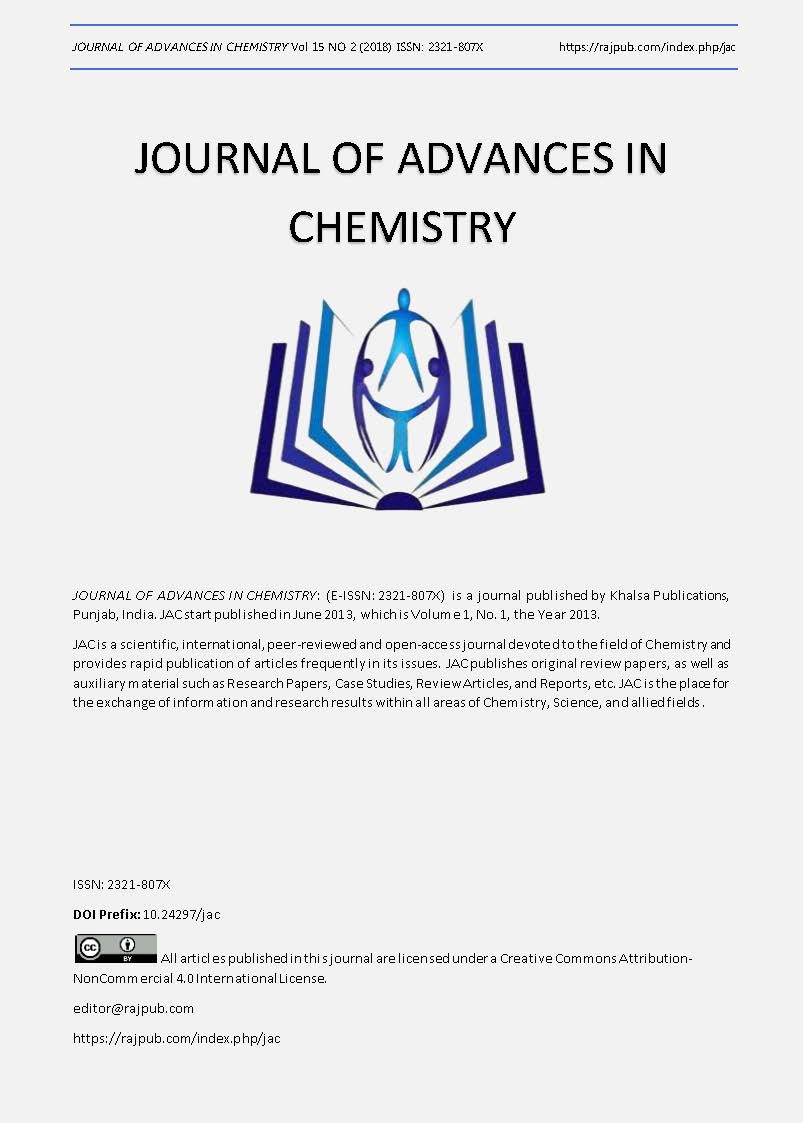The Colloidal Quantum Dots Suitability for Long Term Cell Imaging
DOI:
https://doi.org/10.24297/jac.v15i2.7879Keywords:
quantum dots, nanoprobes, long term cell imaging, bioimaging, fluorescence microscopyAbstract
Fluorescent semiconductor nanoparticles in tree-dimensional quantum confinement, quantum dots (QDs), synthesized in aqueous medium, and functionalized with polyethylene glycol, were used as nonspecific nanosized probes for the long-term imaging of glial cells. In vitro living healthy as well as cancer glial cells were labelled by direct insertion of a small volume of QDs contained in aqueous suspension into the culture wells. A long-term monitoring (over 7 days) of the cells was performed and no evidence of cell fixation and/or damage was observed. Two control groups, healthy and non-healthy glial cells, were used to compare cell viability. During the observation period, labelled cells kept the same behavior compared to non-labelled control samples. To our knowledge, this is the first report of the viability of quantum dots for long-term imaging of living cells. This opens a large range of possibilities related to a better understand of cellular mechanisms, which till now was not achieved by any other fluorescent probe. The study also permitted the observation of two distinct interaction kinetics between cells and QDs. Healthy glial cells were mainly labelled at their surface, while non-healthy glial cells have shown a high rate in the uptake of QDs.
Downloads
References
R. P. Feynman, “The strange theory of light and matter” 1985; Princeton Science Library, 146-152.
I. S. Osborne, “Complex light and matter interactions”, Science, 2014. 17: 346, 6207, 310-311.
S. Abdallah, N. Al-Hosiny, A. A. Badawi, “Photoacoustic Study of CdS QDs for Application in Quantum-Dot-Sensitized Solar Cells”, J. Nanomat. 2012: Article ID 498286, 1-6.
C. T. Matea, T. Mocan, F. Tabaran, T. Pop, O. Mosteanu, C. Puia, C. Iancu, L. Mocan, “Quantum dots in imaging, drug delivery and sensor applications”, Int J. Nanomedicine. 2017; 12: 5421–5431.
I. V. Martynenko, A. P. Litvin, F. Purcell-Milton, A. V. Baranov, A. V. Fedorov and Y. K. Gun'ko, “Application of semiconductor quantum dots in bioimaging and biosensing”, J. Mater. Chem. B, 2017,5, 6701-6727.
K. D. Wegner, N. Hildebrandt, “Quantum dots: bright and versatile in vitro and in vivo fluorescence imaging biosensors”, Chem Soc Rev. 2015;. 21;44(14):4792-834.
C. E. Bradburne, J. B. Delehanty, K. B. Gemmill, B. C. Mei, H. Mattoussi, K. Susumu, J. B. Blanco-Canosa, P. E. Dawson, I. L. Medintz, “Cytotoxicity of Quantum Dots Used for In Vitro Cellular Labeling: Role of QD Surface Ligand, Delivery Modality, Cell Type, and Direct Comparison to Organic Fluorophores”, Bioconjugate Chem., 2013, 24 (9), 1570–1583.
W. Ma, L. X. Qin, F.T. Liu, Z. Gu, J. Wang, Z. G. Pan, T. D. James, Y. T. Long, “Ubiquinone-quantum dot bioconjugates for in vitro and intracellular complex sensing”, Scientific Reports 2013; 3, Article number: 1537.
B. A. Koeneman, Y. Zhang, K. Hristovski, P. Westerhoff, Y. Chen, J. C. Crittenden, D. G. Cappo, “Experimental approach for an in vitro toxicity assay with non-aggregated quantum dots”, Toxicol. In Vitro. 2009;23 (5):955-62.
E. Oh, Rong Liu, A. Nel, K. B. Gemill, M. Bilal, Y. Cohen, I. L. Medintz, “Meta-analysis of cellular toxicity for cadmium-containing quantum dots”, Nat. Nanotech. 2016 11, 479–486.
W. Perkins, F. R. Fischer, “Inserting Porphyrin Quantum Dots in Bottom-Up Synthesized Graphene Nanoribbons”, Chemistry. 2017; 14; 17687-17691.
S. Umrao, M. Jang, J. H. Oh, G. Kim, S. Sahoo, Y. Cho, A. Srivastava, I. Oh, “Microwave bottom-up route for size-tunable and switchable photoluminescent graphene quantum dots using acetylacetone: New platform for enzyme-free detection of hydrogen peroxide”, Carbon 2015; 514-552.
Y. Qin, Y. Cheng, L. Jiang, X. Jin, M. Li, X. Luo, G. Liao, T. Wei, Q. Li, “Top-down Strategy toward Versatile Graphene Quantum Dots for Organic/Inorganic Hybrid Solar Cells”, ACS Sustainable Chem. Eng.,2015,3:4, 637–644.
S. Kellici, J. Acord, Nicholas P. Power, D. J. Morgan, P. Coppo, T. Heilf, B. Sahaa, “Rapid synthesis of graphene quantum dots using a continuous hydrothermal flow synthesis approach”, RSC Adv., 2017, 7, 14716.
O. Muhammad, A. Popescu, S. A. Toms, “Macrophage-mediated colocalization of quantum dots in experimental gliomas”. Methods Mol Biol. 2007;374:161-71.
A. B. Madhankumar, O. D. Mrowczynski, S. R. Patel, C. L. Weston, B. E. Zacharia, M. J. Glantz, C. A. Siedlecki, L. C. Xu, J. R. Connor, “Interleukin-13 conjugated quantum dots for identification of glioma initiating cells and their extracellular vesicles”, Acta Biomater. 2017 Aug;58:205-213.
J. E. Francis, D. Mason, R. Lévy, “Evaluation of quantum dot conjugated antibodies for immunofluorescent labelling of cellular targets”, Beilstein J. Nanotechnol. 2017; 9(8) 1238-1249.
K. P. Lee, J. E. Kim, W. H. Park, H. Hong, “Regulation of C6 glioma cell migration by thymol”, Oncol Lett. 2016; 11(4): 2619–2624.
L. Ma-Hock, S. Brill, W. Wohlleben, P. M.A. Farias, C. R. Chaves, D. P.L.A. Tenório, A. Fontes, B. S. Santos, R. Landsiedel, S. Treumann, V. Strauss, B. van Ravenzwaay. “Short term inhalation toxicity of a liquid aerosol of CdS/Cd(OH)2 core shell quantum dots in male Wistar rats”, Toxicol. Lett. 2012; 208 115–124.
L. Ma-Hock, P. M. A. Farias, T. Hofmann, A. C. D. S. Andrade, J. N. Silva, T. M.S. Arnaud, W. Wohlleben, V. Strauss, S. Treumann, C. R. Chaves, S. Gröters, R. Landsiedel, B. van Ravenzwaay, “Short term inhalation toxicity of a liquid aerosol of glutaraldehyde-coated CdS/Cd(OH)2 core shell quantum dots in rats”, Toxicol. Lett. 2014; 225 20–26.
H. L. Lee, A. M. Issam, M. Belmahi, M. B. Assouar,H. Rinnert, M. Alnot, "Synthesis and Characterizations of Bare CdS Nanocrystals Using Chemical Precipitation Method for Photoluminescence Application", J. Nanomat. 2009; Article ID 914501, 1-9.
Downloads
Published
How to Cite
Issue
Section
License
 All articles published in Journal of Advances in Linguistics are licensed under a Creative Commons Attribution 4.0 International License.
All articles published in Journal of Advances in Linguistics are licensed under a Creative Commons Attribution 4.0 International License.




